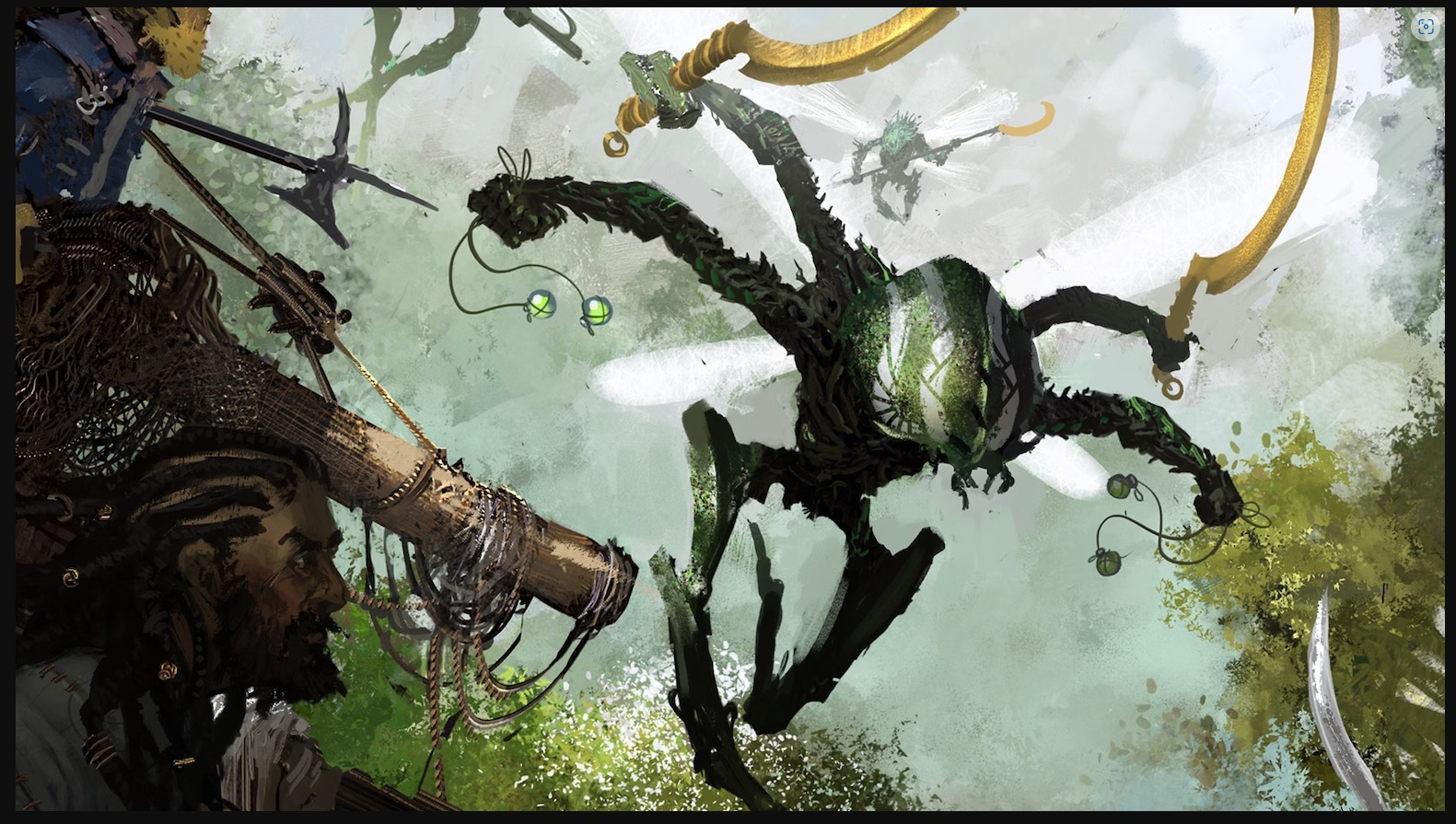As promised a while ago, I want to give a report of and my thoughts on a short campaign of the Wildsea that I am currently playing in, as well as the system in general.
As the system is fairly new and not yet discussed on the blog, I want to start with a small overview:
The system is heavily interwoven with its setting, namely the Wildsea. After an unexplained event on a more or less earth-like planet, the entire planet was covered in mile high trees, forming a single dense canopy, on which a new kind of ship can “sail”, most commonly by using saws or the like to work across the vegetation, which regenerates at supernatural speed.
Its fundamentally a more optimistic post apocalyptic world in which after ~300 yrs small societies are once again thriving in this strange and dangerous world.
Players (there is a shared-GM version included in the rules, but we are playing with a dedicated GM) are usually crewing a ship together, with a shared ship-sheet and character sheets.
The game uses d6 dice pools, inspired by Blades in the Dark although there are significant differences outside of the pure mechanics of resolution (and even in resolution, there are notable differences).
There is a strong focus on resources (a pretty narrow category in the context of this game) which can be used in a variety of ways, from advantages in checks to almost spell-like effects and a very free-form crafting system.
Besides fairly traditional skills, a PC has edges (think approaches to problem solution), languages (there is a common tounge but the game centers significant cultural differences for which languages are a proxy beyond mere communication), resources as mentioned above and perhaps most importantly aspects.
These Aspects fulfill four roles: they often have mechanical effects, allowing a PC to bend the usual rules; they give narrative permissions based on what having such an aspect should allow one to do (eg. a little companion would be able to crawl through tiny gaps); and, whenever they reasonably would come into play while attempting a check they grant an advantage (+1 die).
Beyond these active uses, they serve as the closest thing to HP a PC has. If you take damage, you may decide which of your aspects gets marked (with different aspects having different limits on how much they can take). If these are ‘full’ you can no longer use them.
Two notable additions to the BitD inspired resolution include:
Twists, which happen when any doubles are rolled. These allow for a small but useful change in the narrative, making for lots of emergent gameplay. They also require someone other than the person making the check to define what happens, so that group engagement stays high during rolls.
Cuts take away your highest rolled dice to increase difficulty for a varitey of reasons. These allow for significant challenge even in a system that is, by default, very generous to competent characters.
Play is seperated into 3 modes, with scenes being very standard, montages allowing for quicker passage of time and Journeys being the core around which the game revolves. Journeys are essentially a cooperative random story generator, where players and GM work together to create events on the Wildsea. There is also a way for players to use resources to take full control by spending a whisper and a chart (two types of resources) to come up with a location or event that the ship heads to next.
Beyond the story driving default checks, Aquisition rolls (gaining resources) and rolls in combat have very defined outcomes (twists notwithstanding) serving as great “outlets” for complications and the like. Because these dont lead to new complications, they give a handle on the problem of every roll leading to new rolls.
Overall, this is nothing earth shattering but it does present a very streamlined experience, that gives some well defined agency to players and allows for lots and lots creativity which is aided by the very unique but vague setting.
The next post will be on the goings on of the campaign.


One response to “An introduction to The Wildsea”
I am curious about how montages work. Are they simple conversations about what everyone is doing and when? Are there any needs for discrete resolution or do montages have their own resolution rules? Do they lead to scenes explicitly or just connective tissue?